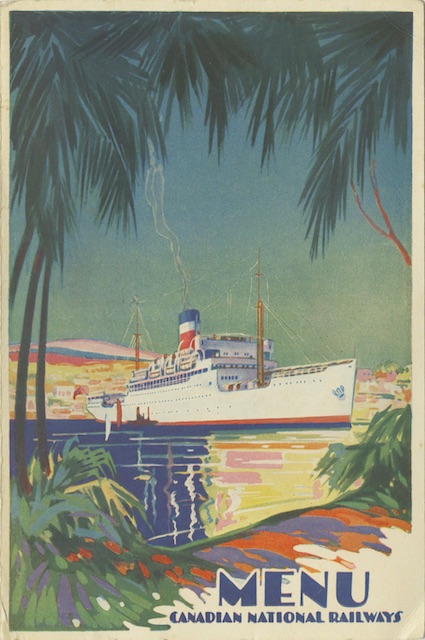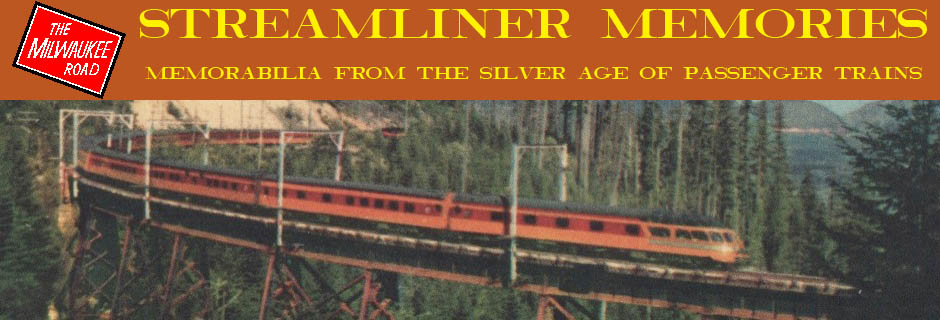This menu cover pictures the Lady Nelson, one of five “Lady” boats the Canadian National had built in 1928 and 1929 to provide service between Montreal and the West Indies. All of them were pressed into troop carrier service during World War II, and all but Lady Rodney were sunk by torpedoes. The Lady Nelson was in port when it sank, so it was salvaged, repaired, and continued to serve through the end of the war.
 Click image to download a 1.0-MB PDF of this menu.
Click image to download a 1.0-MB PDF of this menu.
After the war, the Lady Nelson and Lady Rodney returned to West Indies service for a few years. I’ve seen two postcards using similar images but one is supposed to be Lady Nelson and the other Lady Rodney. However, there are enough differences between the ships that I feel confident the one on this cover is Lady Nelson.
Nothing on this 1948 dining car menu says anything about the ship; the back cover advertises golf in Jasper. I suppose Canadians were expected to know that a Canadian National steamship in a tropical port was one of the Lady boats. When the menu was issued, the Lady boats would have only five more years before CN, losing to airline competition, gave up West Indies steamship routes and sold the ships to an Egyptian shipping company, which renamed the Lady Nelson the Gumhuryat Misr.
